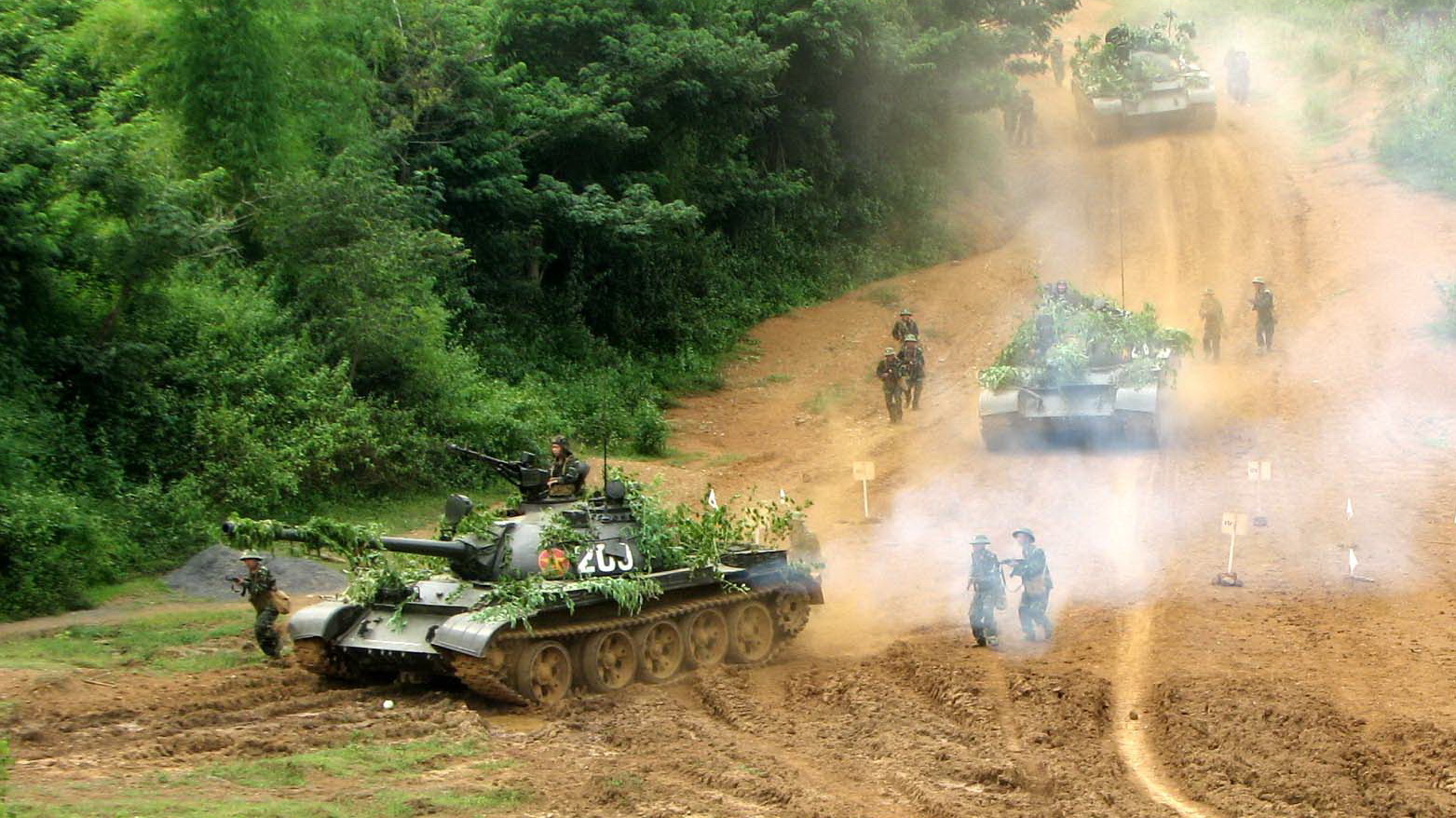Vietnamese military engineers have been successful in producing fully domestic-made tank armors that can withstand powerful shoulder-launched anti-tank rockets.
With their strong firepower and destructive capabilities, tanks are always among top priority targets for opposing forces during battle, according to Major Nguyen Vu Hung, head of the technical design and explosives application department at the military-owned Institute of Propellants and Explosives.
“We have been dreaming of building an explosive reactive armor for our tanks to cover the vehicles’ weakest and most vulnerable spots against anti-tank shells for a while.” Hung said. “It took us a long time to finally build one.”
Explosive reactive armors (ERAs) work by detonating an element of itself on attack by a penetrating weapon, forcibly driving the armors' metal plates apart to damage the penetrator.
An element of explosive reactive armor consists of a sheet or slab of high explosive sandwiched between two plates, typically metal, called the reactive or dynamic elements.
According to Major Hung, the top priority for engineers at the institute is to build an ERA that can safely detonate a part of itself on attack without causing a chain explosive reaction across the entire armor.
Another challenge in developing ERAs is weight. A heavy armor provides greater protection at the expense of the tank’s mobility on the battlefield, which in turn might increase its chances of being hit with anti-tank shells.
The team of engineers also wanted to build an armor whose detonated elements can be easily replaced on the battlefield using spare parts.
“We had never been in contact with a real ERA element when we started working on the armor,” said Senior Lieutenant Hoang Trung Kien, head of the technical design and explosives application department. “Existing ERA technology is typically kept a national secret that we wouldn’t have been able to acquire, even with money. We had no choice but to rely on available Internet sources and start from scratch.”
The information only helped the team with the outer look of the armor and failed to provide information on the specific measurements or the type of material needed for the metal plates, Kien said.
“We sketched dozens of designs but were still at a loss, as the technology had been non-existent in Vietnam,” Kien said. “There were available resources on the Internet in English and Russian, but they only provided general information that didn’t help with building the actual armor.”
After multiple trials and many errors, the institute was finally able to introduce their first generation of ERAs in 2009.
Testing the armor proved to be quite difficult, however, as tanks are valuable assets of the Vietnamese military and testing the ERA might have put them at risk of damage or destruction.
The team finally made do with testing their armor against stationary steel sheets imitating the body of a tank.
At first, they shot at naked steel sheets using the RPG-7 anti-tank rocket-propelled grenade launcher, followed by tests with the first-gen ERA to test the armor’s protective quality.
Though the sheet of steel covered in the armor was unharmed by the RPG-7, the team was not satisfied with the results, as the penetration caused by the attacking weapon was still too much to guarantee safety on the battlefield.
After several more adjustments and tests, the engineers were finally able to limit the penetration to under 80 millimeters – enough to qualify for a ministry-level test on real tanks.
The test turned out to be a success, as the armor could protect the tanks against RPG-7 or smaller anti-tank weapons with firing ranges of 100 meters.

Senior Lieutenant Hoang Trung Kien, head of the technical design and explosives application department at the Institute of Propellants and Explosives. Photo: Tuoi Tre
However, the weight issue remained, as a single sheet of armor could weigh between 2,500 and 3,000 kilograms, greatly affecting the tank’s mobility on the battlefield.
“We wanted it to be perfect,” Kien said. “That’s why we continued to develop the second generation of ERAs, which can withstand against even the 9M14 Malyutka anti-tank guided missile system, significantly more powerful than the RPG-7.”
According to Kien, the institute has successfully reduced the weight of its second-gen ERAs by a half, to just over 1,000 kilograms.
The senior lieutenant added that all the materials used in producing the armor were domestic and are of similar quality to foreign-produced ERAs.
“It’s meaningless if we can master the technology but still rely on foreign materials,” Kien explained. “Frequent contact with explosives is not healthy, and even minor mistakes cannot only affect the product’s quality but also the safety of the engineers. But you will achieve nothing in life if you’re always scared.”
Like us on Facebook or follow us on Twitter to get the latest news about Vietnam!



















































